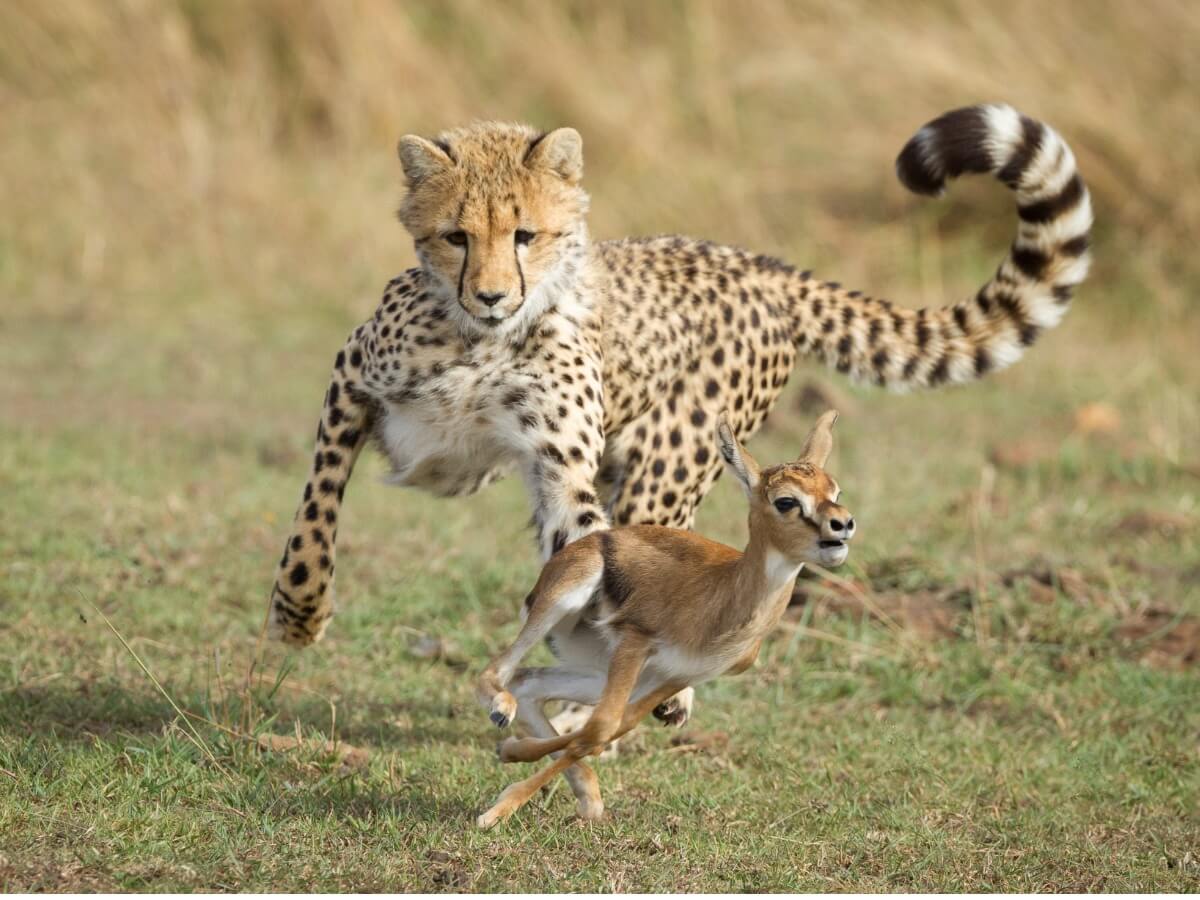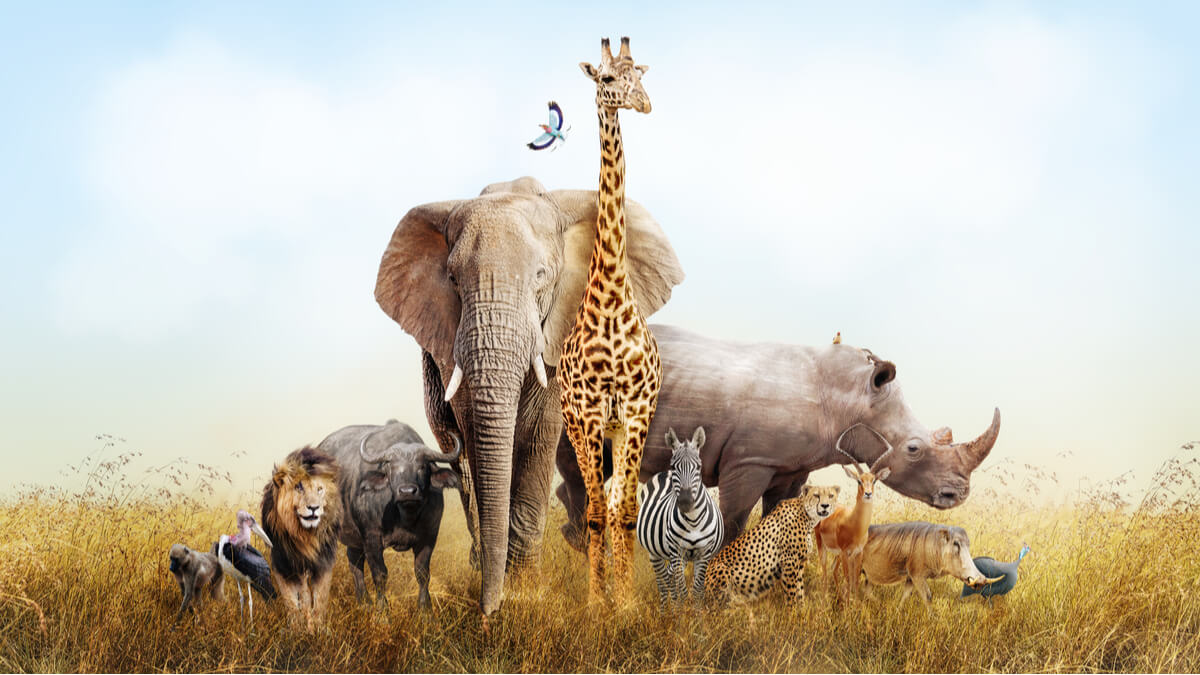Ecological Balance: What Is It and What Factors Alter It?


Written and verified by the biologist Samuel Sanchez
Ecosystems are biological systems made up of a community of living organisms (biocenosis) and an inert but changing physical environment (biotope). Within an ecosystem, food chains and energy flows are formed, as well as intra- and interspecific relationships that modulate the environment and populations. All these factors are essential to maintain the ecological balance.
Ecosystems must be able to remain constant, but also to adapt to natural changes with efficiency and minimal losses. Unfortunately, the adaptive need for these systems has exploded in recent centuries. This has been due to the rapid growth of human intervention and all that that implies. Learn with us everything you need to know about ecological balance.
What’s ecological balance?
The term ecological balance (also known as the balance of nature) refers to a set of theories that explore the long-term maintenance of ecosystems. According to these postulations, any fixed ecosystem is kept in constant equilibrium (homeostasis) and any external disturbance will be corrected with negative feedback.
In ecosystem models, we conceive every animal as like a machine that maximizes its use of energy to obtain biomass from other organisms. In other words, energy is the “price” that living beings pay to stay in the environment, whether it be hunting, foraging, or competing with other species for a specific niche.
Following market similes, short-term ecosystem balance is obtained when all living beings use and demand the same amount of energy/biomass in all possible niches. If a species grows too large and an imbalance occurs, its predators are expected to increase as well. As a result, this would regulate the imbalance through the negative feedback mentioned above.
Ecosystem equilibrium is reached when all species “ask” and “give” equally in a specific environment.

Stability parameters
Although all these terms seem very ethereal, the reality is that there are parameters capable of quantifying them. As indicated by professional sources, these are some of the values that indicate an ecosystem persistence over time:
- Engineering resilience. According to this parameter, the system is more viable the less it takes to reach its original state after a disturbance. If it’s able to solve problems quickly, the ecosystem will suffer minimal damage from the changes.
- Variance stability. The variation in the population numbers of the species over time. The more fluctuating this value, the more probabilities of extinction.
- Minimum stability. The minimum global density of species. In other words, the more stable and extensive the living populations in an ecosystem are, the more difficult it will be for a negative event to cause a specific part of the environment to become extinct.
- Sustainability. An ecosystem is sustainable when the species are able to remain despite external disturbances.
All these parameters reflect that equilibrium may be easier to achieve in one ecosystem than in another. However, the worse the “health” of the populations that inhabit it, the more likely it is that a collapse will take place after a disaster or disturbance.
Predator / prey interactions
Ecosystem balance is also sustained in food chains, as no open system is maintained without a constant flow of energy. To explain the relationship between prey and predators in an environment, the Lotka-Volterra equations make the following assumptions.
- The prey population has a constant food source. As the species that are predated are usually herbivorous, their population limit isn’t reached due to the lack of food.
- The amount of food for predators depends entirely on the prey population.
- The rate of change in population numbers is directly proportional to the size of the population.
- During interactions, the environment doesn’t change to favor either party.
- Predators have an unlimited appetite, that is, they catch as much prey as they can.
Although these assumptions aren’t fulfilled in all cases, they do serve to exemplify the most typical models of predator/prey interaction. Simply put, the equation postulates that the more prey there are in a system, the more predators will be born to hunt them down. Once the population of the prey is reduced, the excess of predators will die for lack of food.
According to this postulation, predator and prey populations show peaks and troughs over time. One species is always in harmony with the other.
Agents that disturb the ecosystem balance
As you can imagine, an ecosystem is capable of “absorbing” changes and variations to some extent. However, when the damage is too great, the compensatory mechanisms can stop working. Here are some actions – especially of human origin – that can upset this ecosystem balance.
Massive felling of trees
As indicated by the newspaper El País, the world lost 15.8 million hectares of tropical forests in 2017. The disaster is clear if we take into account that 80% of the terrestrial biomass in the form of carbon is found in trees and plants. If such amounts of plant matter are removed from a single ecosystem, trophic chains are irreversibly destabilized.
Introduction of exotic species
The Lotka-Volterra equation can be fulfilled in a system in which both parties have evolved in the same environment for thousands of years. However, if a “prey” population enters an ecosystem in which it has no natural predators, the exotic species will carry a very dangerous invasive potential.
A species adapted to a foreign ecosystem can grow exponentially if it establishes itself well enough. In these cases, the ecosystem balance can be lost and the food chains are seriously disrupted.
Human constructions
Farmlands, cities and industrial zones can become micro-ecosystems by themselves. However, they aren’t beneficial for the whole system in which they’ve been established. It’s necessary to make thorough plans and environmental impact assessments before building in an ecosystem, as this minimizes damage and prevents loss of balance.
Loss of species
An exotic species in an environment can be dangerous, but it’s equally bad that one that was already established disappears. As indicated by the IUCN Red List, 28% of the evaluated species are in danger. As a result, many ecosystems are at risk, especially if the species that disappears provides a considerable amount of biomass to the system.

Ecosystems aren’t unbreakable
As you can see, the term ecological balance is somewhat ethereal. However, it can be quantified by taking into account some numerical variables that arise from the relationships between living beings. In other words, it’s possible to infer whether an environment can remain stable or not over time.
According to these postulations, ecosystems are capable of “fixing themselves” up to a certain point after a deleterious change, but they certainly can’t follow the rate of change established by humans. If production models and the way we conceive of nature don’t change, we may have to face the loss of environments vital to our survival in the future.
Ecosystems are biological systems made up of a community of living organisms (biocenosis) and an inert but changing physical environment (biotope). Within an ecosystem, food chains and energy flows are formed, as well as intra- and interspecific relationships that modulate the environment and populations. All these factors are essential to maintain the ecological balance.
Ecosystems must be able to remain constant, but also to adapt to natural changes with efficiency and minimal losses. Unfortunately, the adaptive need for these systems has exploded in recent centuries. This has been due to the rapid growth of human intervention and all that that implies. Learn with us everything you need to know about ecological balance.
What’s ecological balance?
The term ecological balance (also known as the balance of nature) refers to a set of theories that explore the long-term maintenance of ecosystems. According to these postulations, any fixed ecosystem is kept in constant equilibrium (homeostasis) and any external disturbance will be corrected with negative feedback.
In ecosystem models, we conceive every animal as like a machine that maximizes its use of energy to obtain biomass from other organisms. In other words, energy is the “price” that living beings pay to stay in the environment, whether it be hunting, foraging, or competing with other species for a specific niche.
Following market similes, short-term ecosystem balance is obtained when all living beings use and demand the same amount of energy/biomass in all possible niches. If a species grows too large and an imbalance occurs, its predators are expected to increase as well. As a result, this would regulate the imbalance through the negative feedback mentioned above.
Ecosystem equilibrium is reached when all species “ask” and “give” equally in a specific environment.

Stability parameters
Although all these terms seem very ethereal, the reality is that there are parameters capable of quantifying them. As indicated by professional sources, these are some of the values that indicate an ecosystem persistence over time:
- Engineering resilience. According to this parameter, the system is more viable the less it takes to reach its original state after a disturbance. If it’s able to solve problems quickly, the ecosystem will suffer minimal damage from the changes.
- Variance stability. The variation in the population numbers of the species over time. The more fluctuating this value, the more probabilities of extinction.
- Minimum stability. The minimum global density of species. In other words, the more stable and extensive the living populations in an ecosystem are, the more difficult it will be for a negative event to cause a specific part of the environment to become extinct.
- Sustainability. An ecosystem is sustainable when the species are able to remain despite external disturbances.
All these parameters reflect that equilibrium may be easier to achieve in one ecosystem than in another. However, the worse the “health” of the populations that inhabit it, the more likely it is that a collapse will take place after a disaster or disturbance.
Predator / prey interactions
Ecosystem balance is also sustained in food chains, as no open system is maintained without a constant flow of energy. To explain the relationship between prey and predators in an environment, the Lotka-Volterra equations make the following assumptions.
- The prey population has a constant food source. As the species that are predated are usually herbivorous, their population limit isn’t reached due to the lack of food.
- The amount of food for predators depends entirely on the prey population.
- The rate of change in population numbers is directly proportional to the size of the population.
- During interactions, the environment doesn’t change to favor either party.
- Predators have an unlimited appetite, that is, they catch as much prey as they can.
Although these assumptions aren’t fulfilled in all cases, they do serve to exemplify the most typical models of predator/prey interaction. Simply put, the equation postulates that the more prey there are in a system, the more predators will be born to hunt them down. Once the population of the prey is reduced, the excess of predators will die for lack of food.
According to this postulation, predator and prey populations show peaks and troughs over time. One species is always in harmony with the other.
Agents that disturb the ecosystem balance
As you can imagine, an ecosystem is capable of “absorbing” changes and variations to some extent. However, when the damage is too great, the compensatory mechanisms can stop working. Here are some actions – especially of human origin – that can upset this ecosystem balance.
Massive felling of trees
As indicated by the newspaper El País, the world lost 15.8 million hectares of tropical forests in 2017. The disaster is clear if we take into account that 80% of the terrestrial biomass in the form of carbon is found in trees and plants. If such amounts of plant matter are removed from a single ecosystem, trophic chains are irreversibly destabilized.
Introduction of exotic species
The Lotka-Volterra equation can be fulfilled in a system in which both parties have evolved in the same environment for thousands of years. However, if a “prey” population enters an ecosystem in which it has no natural predators, the exotic species will carry a very dangerous invasive potential.
A species adapted to a foreign ecosystem can grow exponentially if it establishes itself well enough. In these cases, the ecosystem balance can be lost and the food chains are seriously disrupted.
Human constructions
Farmlands, cities and industrial zones can become micro-ecosystems by themselves. However, they aren’t beneficial for the whole system in which they’ve been established. It’s necessary to make thorough plans and environmental impact assessments before building in an ecosystem, as this minimizes damage and prevents loss of balance.
Loss of species
An exotic species in an environment can be dangerous, but it’s equally bad that one that was already established disappears. As indicated by the IUCN Red List, 28% of the evaluated species are in danger. As a result, many ecosystems are at risk, especially if the species that disappears provides a considerable amount of biomass to the system.

Ecosystems aren’t unbreakable
As you can see, the term ecological balance is somewhat ethereal. However, it can be quantified by taking into account some numerical variables that arise from the relationships between living beings. In other words, it’s possible to infer whether an environment can remain stable or not over time.
According to these postulations, ecosystems are capable of “fixing themselves” up to a certain point after a deleterious change, but they certainly can’t follow the rate of change established by humans. If production models and the way we conceive of nature don’t change, we may have to face the loss of environments vital to our survival in the future.
All cited sources were thoroughly reviewed by our team to ensure their quality, reliability, currency, and validity. The bibliography of this article was considered reliable and of academic or scientific accuracy.
- Ecological balance, WWF. Recogido a 28 de junio en https://wwf.panda.org/discover/knowledge_hub/teacher_resources/webfieldtrips/ecological_balance/
- Pimm, S. L., & Pimm, S. L. (1991). The balance of nature?: ecological issues in the conservation of species and communities. University of Chicago Press.
- Kricher, J. (2009). The balance of nature: ecology’s enduring myth. Princeton University Press.
- Egerton, F. N. (1973). Changing concepts of the balance of nature. The Quarterly Review of Biology, 48(2), 322-350.
- Liu, S., Li, L., Bonenberg, W., Bardzinska-Bonenberg, T., & Zhou, M. (2019, July). Management Balance Between Nature and Rural Settlements in China. In International Conference on Applied Human Factors and Ergonomics (pp. 279-285). Springer, Cham.
This text is provided for informational purposes only and does not replace consultation with a professional. If in doubt, consult your specialist.








